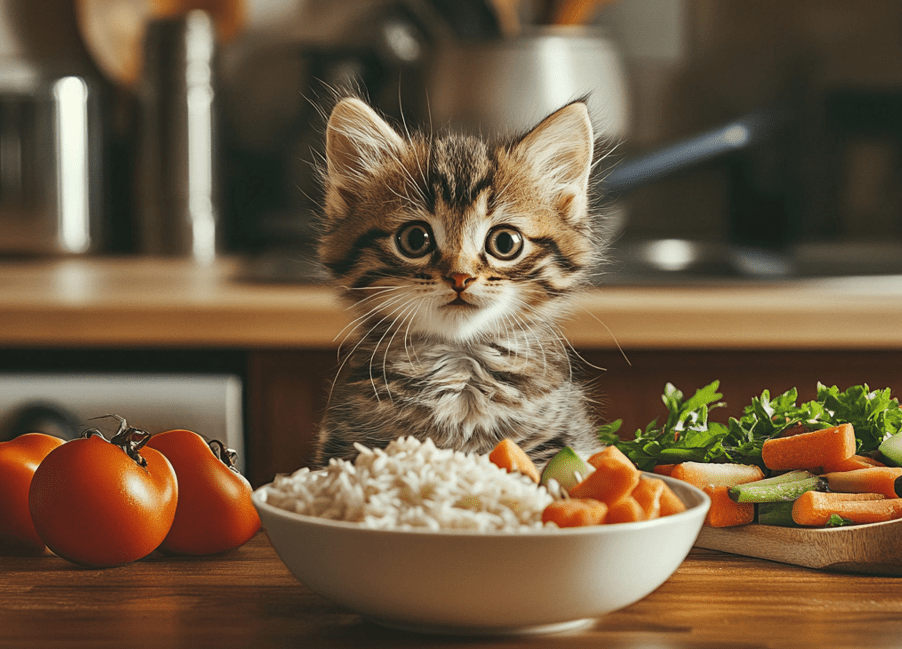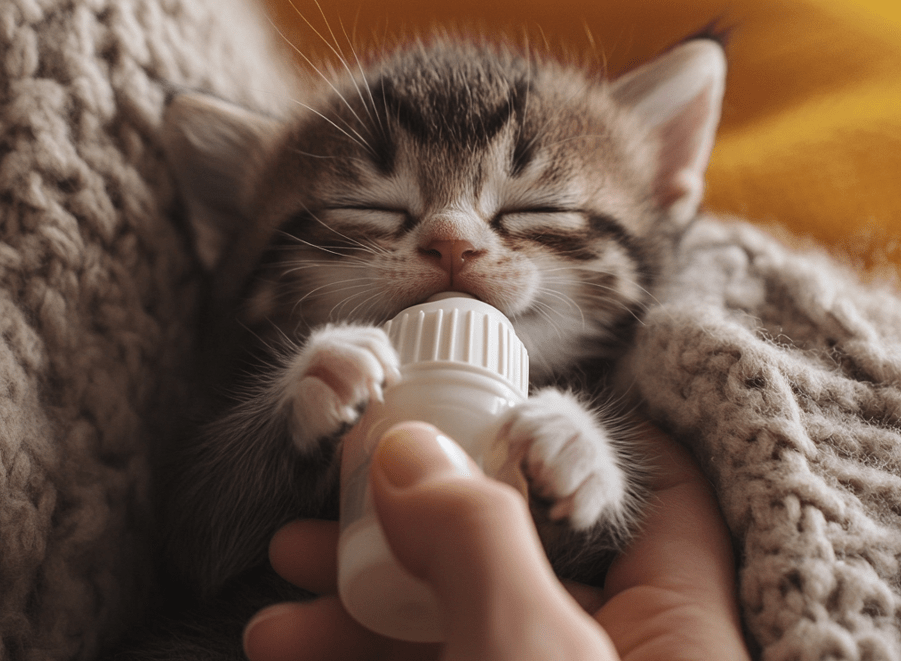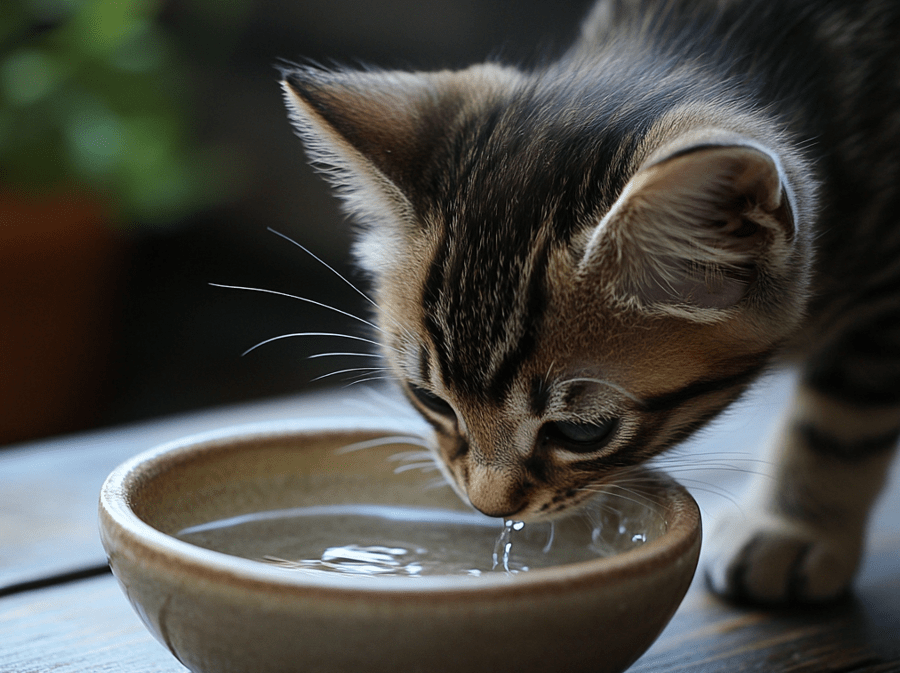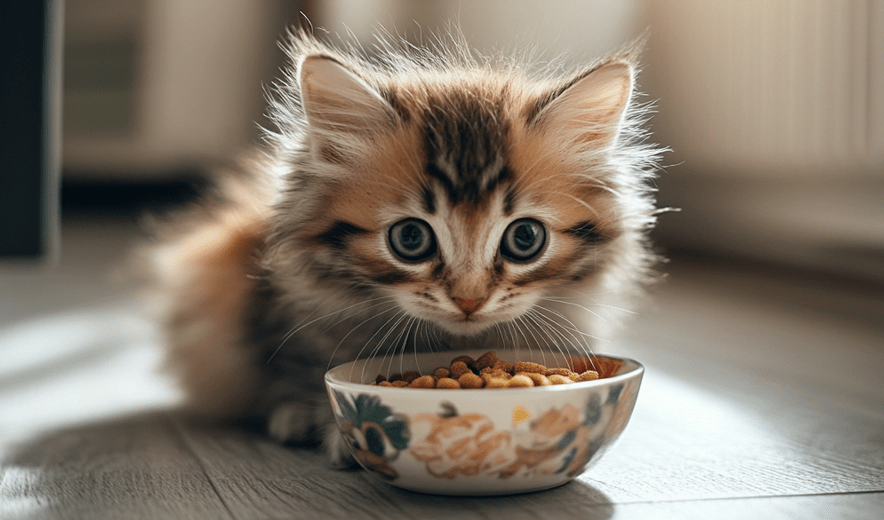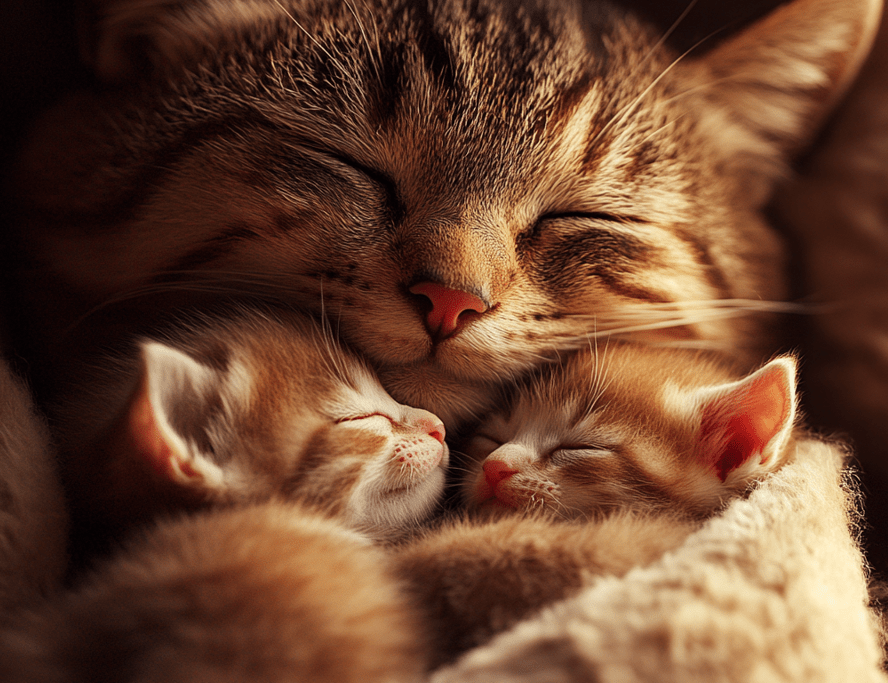
Whether you have a cat that is a new mother, caring for orphaned kittens or your fosters are growing up before your eyes – weaning is the time when pet parents get involved. The introduction of the child from breast milk (or a substitute) to solid food should be slow and careful; this is known as weaning. Unfortunately many aren’t sure when kittens nurse, and some people are even unsure when to start the weaning process. Knowledge of the weaning process timeline and steps involved is important in assuring that kittens grow properly. So, this is a brief guide to keeping your baby how you can make the weaning process work and able better care of your baby;
To watch the summary of this article, just watch this video-
What is Weaning?
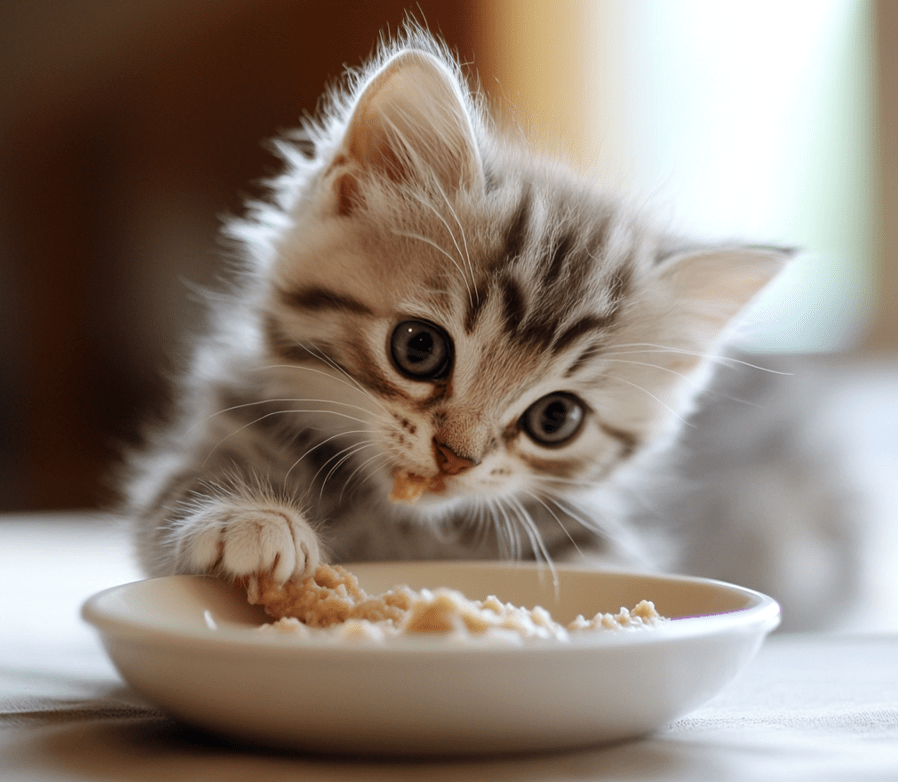
Weaning is the period when your newborn kittens begin to transition from being nourished by milk either through nursing or bottle feeding to consuming solid food. Kittens start to become mobile and independent during this stage as they need food less from mother’s milk and start depending on themselves.
Why Moving On to Adult Cat Food is So Important
Kittens are in the process of fast growth and rapidly developing creatures with a lot of energy and play time. Kitten food is denser in calories, protein and fat as it has been developed to meet the needs of their active growth phase. It also includes DHA to aid in the development of their brain and vision, as well as essential vitamins and minerals needed for robust immune system function during all stages of growth.
The fact is that as cats get older, their dietary requirements are different and this means the nutrition in kitten food is not enough to keep them healthy. They will not need as many nutrients as they previously did, and in fact, you may find them getting a little podgier because their energy levels are going to drop so if they continue eating high-calorie kitten food then that could lead to weight gain.
When Is the Appropriate Age to Wean a Kitten?
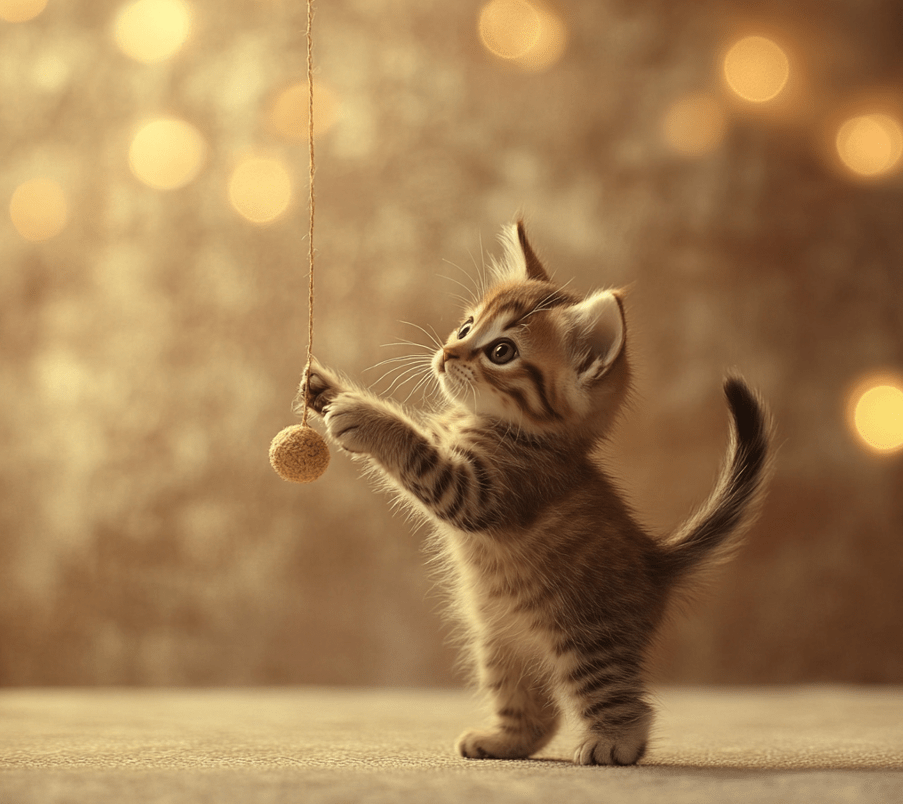
At approximately four weeks of age, kittens are developed enough to start weaning. Before that, especially at less than four weeks of age, they are considered neonate and are usually not ready to be weaned off their mother’s milk/formula.
As kittens start to wean, you might see them moving more and that they are capable of holding their tails up while standing. At this point they will have their incisors and canines come in and start to explore the world around them, mostly through play.
Kittens that cannot stand, play and keep their eyes focused are not ready to be weaned. In very rare cases weaning can start as early as three weeks so long as the kitten is showing signs of preparedness. You need to be watchful of the diet of your kitten otherwise, they might lack nutrients.
Duration of Kitten Weaning
Normally, it takes about 4 to 6 weeks for kittens to be weaned. This is true for kittens that nurse from their mom and those who are bottle-fed as orphans. At this changing time, kittens are starting to ease off their reliance on mother’s milk or formula and they’ll be eating more solid food. Here, it is to be remembered that although the process of weaning barely lasts a short while most kittens are fully weaned by ages eight to ten weeks. By this point, the little guy should be completely weaned and eating solids (and growing), getting prepared to go to his home.
How to Initiate the Weaning Process
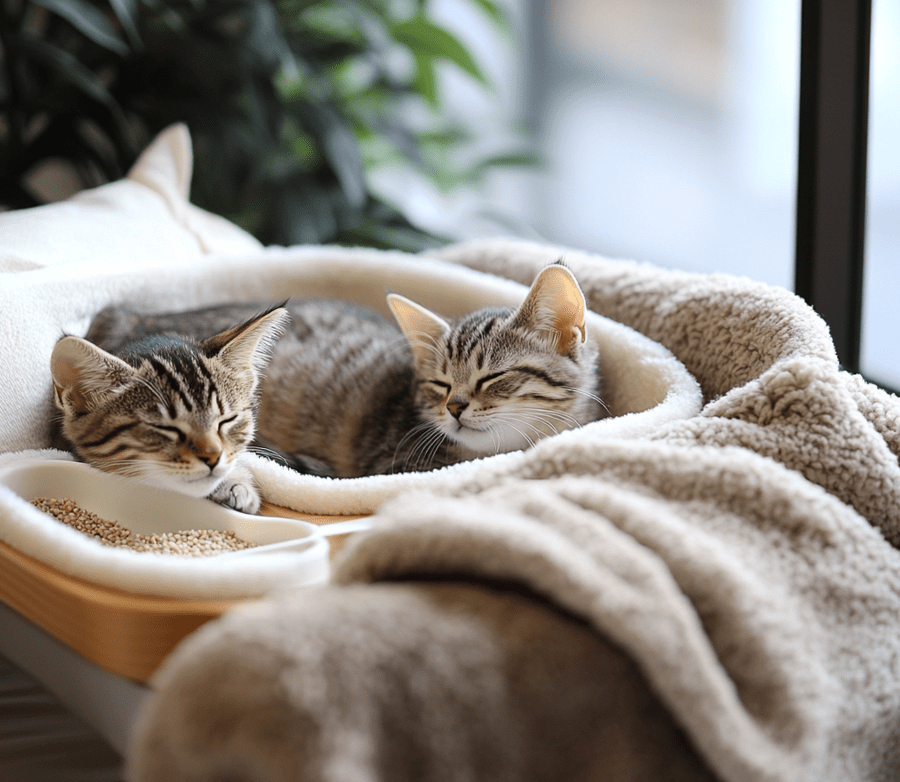
To begin the weaning process, just keep the mother cat away from her kitten only for a few hours. This tactic helps reduce the dependence of the kitten on its mother and her milk. Creating particular rooms (one for kitty, one for mom) with a litter box and food /water is necessary.
Gradually, as the kitten continues to become more socialized and independent of its mother, it will be able to spend longer periods with her between feeds until weaning is complete. Make sure to not separate the kitten from its mother too quickly, for if you do so it might have harmful consequences in either case; they may become aggressive or even start being nervous.
Kittens learn how to do its basic movements like play, eat, interact and even use the litter box by watching their mother or another adult cat. Preferably, the kitten should be fully weaned from its mother.
How to Feed a Weaning Kitten
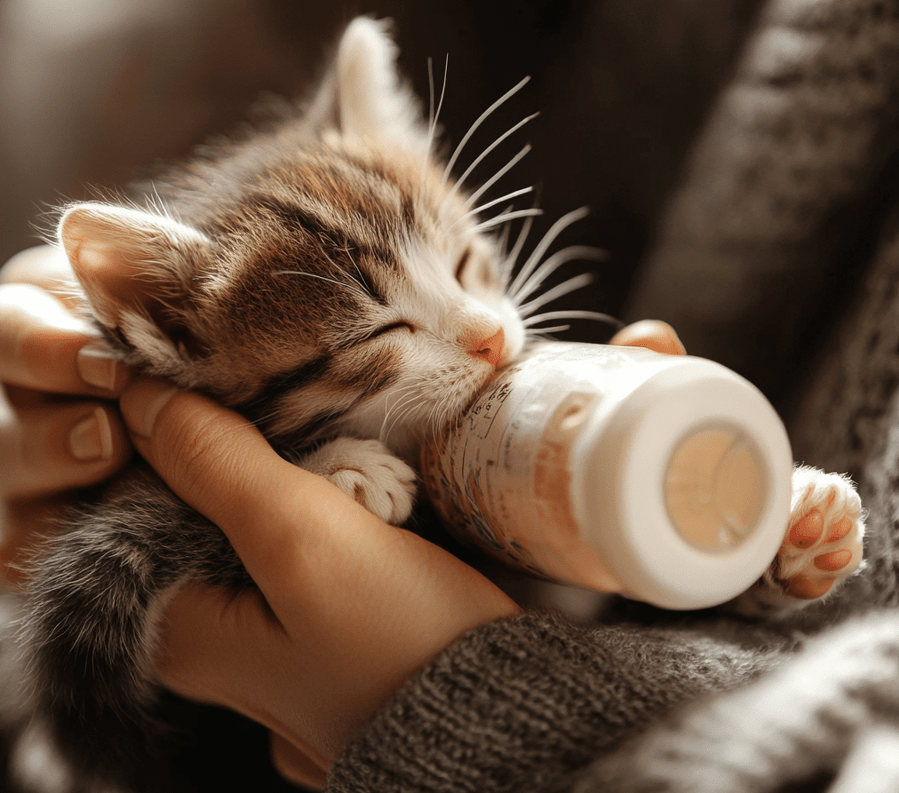
If the kittens aren’t orphans then they’ll still be feeding from their mum so there’s no need to bottle feed them. Some separation from their mother is beneficial for everyone to make sure she gets a breather and that the kittens are not fully dependent on her.
Feed orphaned kittens being weaned kitten formula by bottle or shallow bowl. When you feed the kitten by bottle, tilt it at an angle and make sure that the kitten is lying on his stomach rather than his back.
It’s important to burp kittens (while they are still on the formula) before, during and after feeding. You can do it by holding the kitten on your shoulder or belly up patting gently at the back of to make him burp.
To transition from feeding a bottle to sow, dip your finger in the bowl, then let rinse or suck up formula with his paw. Gently encourage the kitten to tolerate more and eventually get used to the bowl; this time, it learns how to independently drink water in the bowl.
How to Teach a Kitten to Eat Solid Food
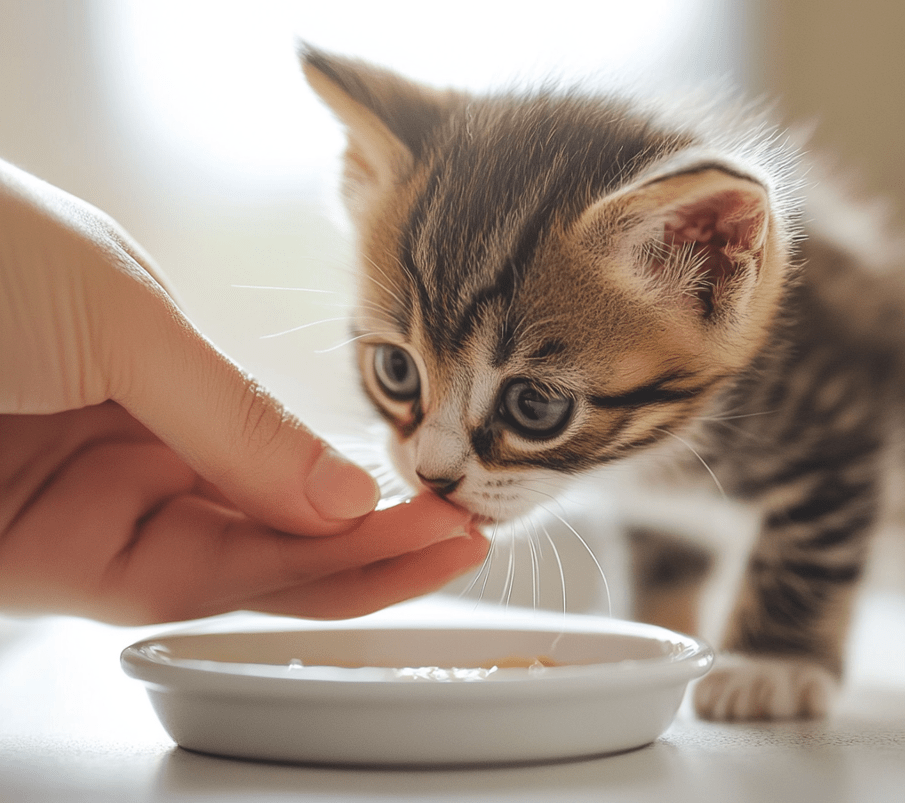
You can give it some mushy food once the little kitten starts to show interest in the mother’s food. Milk and food should be served in a shallow dish for orphaned or fostered kittens. Do not use cow’s milk as it can be hard on a kittens’ digestive system and cause diarrhea, use kitten formula instead.
Moisten any new formula you are making available and serve alongside wet food to help the kitten learn how to self-feed. Gradually change the balance of the mixture, adding more wet food and less formula. Then you can start her on a mix of formula and dry food with the same pattern.
Make sure that fresh water is always available to your kitten. You can also dip your finger into the bowl and allow the kitty to lick the formula off of them so you can transition from a bottle to a bowl. As they get used to the dish, you will lead your kitten with patience towards them to have it feed this!
When she is ready to be weaned you need to follow the correct steps.
1.Select the Appropriate Food
Ensure your kitten is transitioning to a complete and balanced diet, specifically formulated for young growing kittens. The food must say on its package that it complies with the minimum standards as set out by the Association of American Feed Control Officials (AAFCO) and will be prepared for young kittens. We have since been weaning with a commercial can kitten food, to be eventually switched over to the commercial dry cat kitten food/kibble.
2.Place Short Separations from Mother into Action
For example, if you are weaning kittens from their mother then it helps to separate them for short periods of time in order to encourage a level of independence within them. It needs to be around feeding times, should last up to one hour and do not go any more crucial factor. While basically all mother cats can wean themselves, these periodical intermissions may speed up the process. Ensure both the mother and kittens have food, water and a litter box available at all times. Wait until the kittens have learned not to nurse before removing them from their mom or risk creating potential behavioral and social issues later on in life for the newly weaned kitten.
4.Introduce Canned Food
For bottle-fed and nursing kittens, you will want to start the weaning process by mixing small bits of canned kitten food with kitten formula or warm water. Serve this blend with a spoon, shallow dish or along with your fingertip. When the kitten shows interest in this blend, switch from their formula to canned food until they are completely cuffed to it. The process can last several days or even a week. Once the weaning process is started, your kitten should never again need to be bottle fed or supplemented. But if the kitten is not getting the recommended amount of canned or dry food in a day, and does not gain weight consistently, they will be filled by hand with formula.
5.Introduce Dry Food
Repeat the same process as in step 3, but mix dry food with kitten formula or warm water. Offer this combination when the kitten is between 5 to 6 weeks of age, about a week after you have started them on wet food. Once the kitten is more accustomed to kibble, you can slowly decrease the amount of water or formula until they are purely eating dry kibble. This ladder should be passed at about 8 weeks of age, although the precise moment will depend on the individual kitten.
Pro Tips for Weaning Kittens
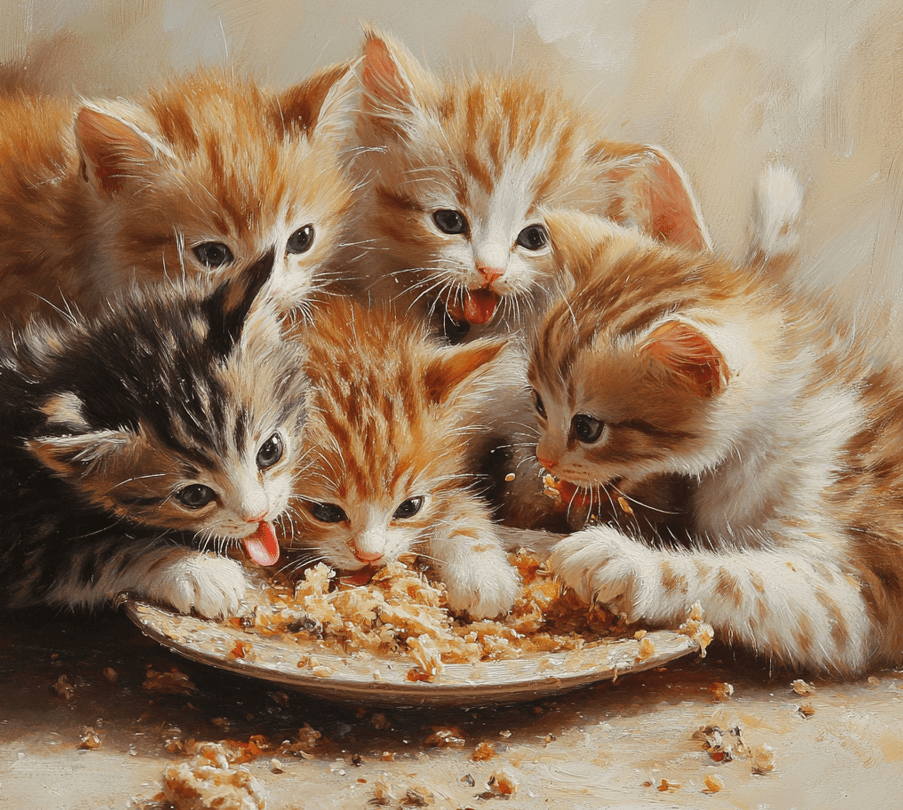
Timing matters: Kittens that are weaned too early can develop behavioral problems such as anxiety and aggressive behavior. Weaning should be delayed to when they are in a good enough shape for it and not before. Watch your kitten for signs of readiness and do not start the process too soon.
Get ready for playful mess: Kittens by nature would always want to be playful, which can make the weaning process sound like a bit of a mess. Clean and dry them after meals
Availability of fresh food: Food should be fresh and refreshed every three to four hours. Kittens need to eat regularly.
Check eating behavior: Ensure that your kitty is consuming food at each meal and piling on their weight per day. You will need to check your kitten food packaging for feeding guidelines – these should give you an idea of the right amounts.
Switching diets: Kittens should be eating a good quality commercial kitten diet until at least 12 months of age, when they should go on an adult dry cat food instead.
Monitor for health: Make sure to monitor your kitten for signs of vomiting, diarrhea, lethargy or loss of appetite. Please take your kitten to the vet immediately if any of these symptoms develop.
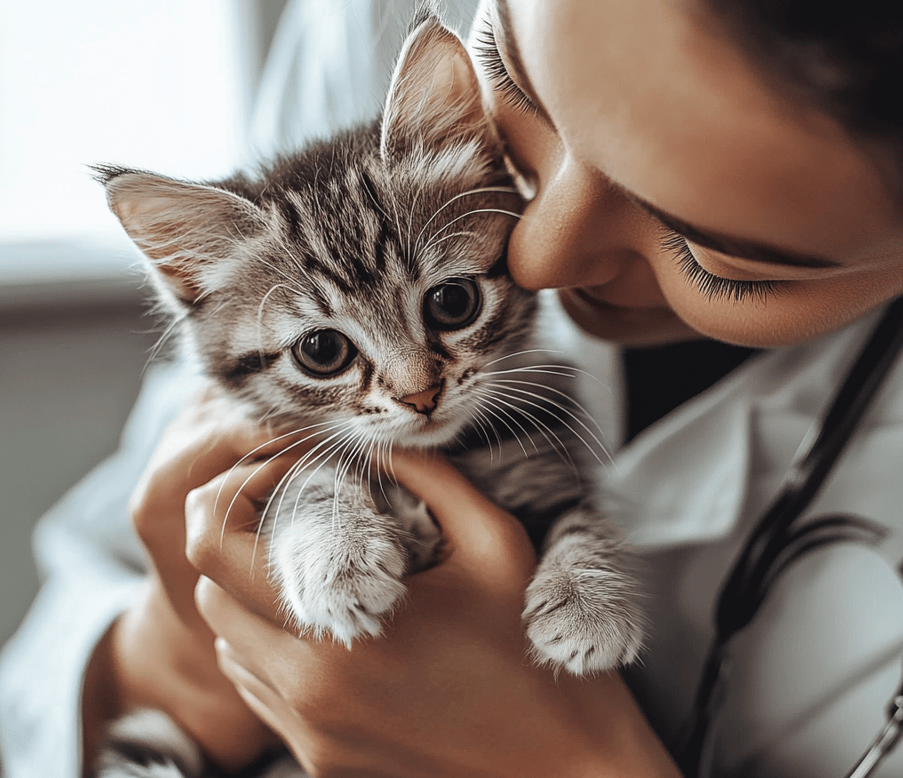
Safe food mixing: When transitioning over to either canned or dry food only mix the food with warm water or kitten formula. Do not offer cow’s milk or other dairy products that can cause gastrointestinal disturbances.

